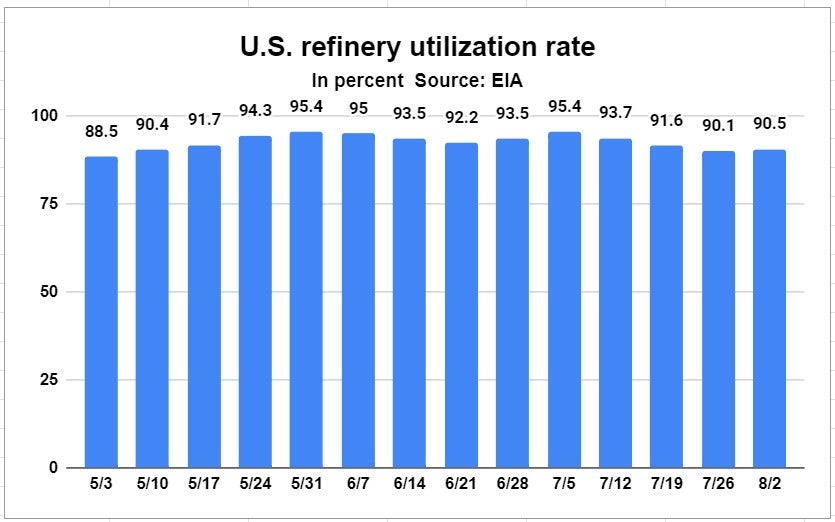With global oil markets having gotten a boost in futures markets the past two trading days from Mideast tensions that are on the verge of actual shooting, the benchmark price used for most diesel surcharges declined on the back of earlier weakness.
The average weekly retail diesel price published by the Department of Energy/Energy Information Administration, used as the basis for most fuel surcharges, fell 5.1 cents a gallon to $3.704. It marked the fifth straight weekly decline.
Streakiness has been a feature of the DOE/EIA price the past few months: A nine-week stretch of price declines was followed by four weeks of increases and now five weeks of a renewed run of lower sequential prices.
The end result is that the DOE/EIA price published Monday is 40.5 cents a gallon less than the most recent high of $4.109 a gallon in back-to-back weeks, Feb. 12 and 19. And while this week’s price didn’t get down to the $3.658 a gallon set on June 10, which was the lowest price since Russia’s invasion of Ukraine, it was the second-lowest price since that military action kicked off what is now about two and a half years of oil market volatility, more if you measure it going back to the start of the pandemic.
Monday’s decline in the benchmark price follows a downward movement in the price of ultra low sulfur diesel on the CME commodity exchange that saw the daily settlement drop to $2.2958 a gallon last Tuesday from $2.4524 on July 24.
But oil markets are now pointing higher as a result of the strong likelihood of military action between Israel on the one side and a combination of Iran and its Hezbollah proxies in Lebanon on the other side. Whether Israeli action against Iran would impact oil-producing or -exporting facilities is not known, but the prospect of a country producing 3.2 million barrels a day – the latest estimate of Iranian production from S&P Global Commodity Insights (SPGCI) – cannot be anything but bullish.
Another factor that has the potential to drive retail diesel prices higher is the fact that refining has turned into only a minimally profitable business in recent months, and there are numerous reports that refiners are going to react accordingly.
A straight comparison of the price of ultra low sulfur diesel on the CME commodity exchange and world crude benchmark Brent shows how much diesel has fallen relative to crude.
That spread the past two trading days has been between 44 and 45 cents per gallon. During the first trading days of July, it was 55-59 cents. And while it was down near current levels at times in May, it was more than 60 cents a gallon in April.
On the earnings call of independent refiner PBF, CEO Matt Lucey said crack spreads – essentially the difference between the price of crude and the products made from it – declined $10 a barrel over the course of the second quarter after adjusting for the price of renewable energy credits known as RINs.
Bloomberg, in an article about the potential reduction in refinery runs, quoted statements from earnings reports and analyst calls that also quoted officials from Marathon Petroleum, Phillips 66 and Valero as all saying they would refine less crude in the current quarter than earlier this year.
The article noted that the slowdowns are coming even as crude output continues to rise, particularly in the U.S. and Guyana. The OPEC+ production figures for July from SPGCI showed a significant increase in output from those nations as well, setting up the prospect of a glut of crude rejected by refiners even as supplies of products such as gasoline and diesel tighten.

More articles by John Kingston
Newly public Proficient has strong Q2, makes first post-IPO acquisition
OOIDA appeal: AB5 will kill off lease drivers, raising Commerce Clause issues
Oppenheimer analysts see fertile ground for Jacobs’ plans at new venture QXO







